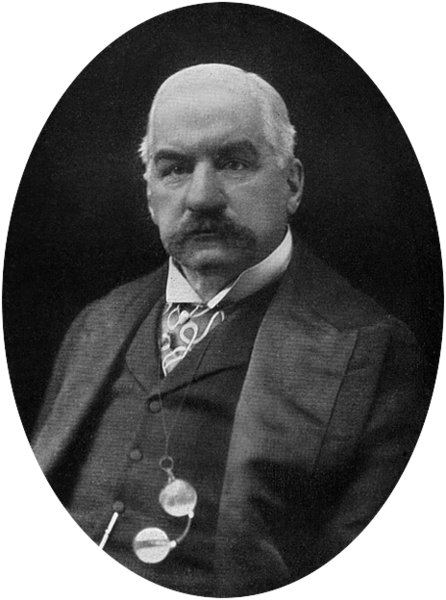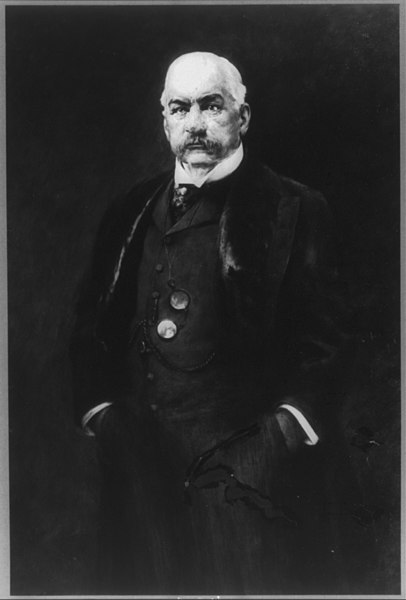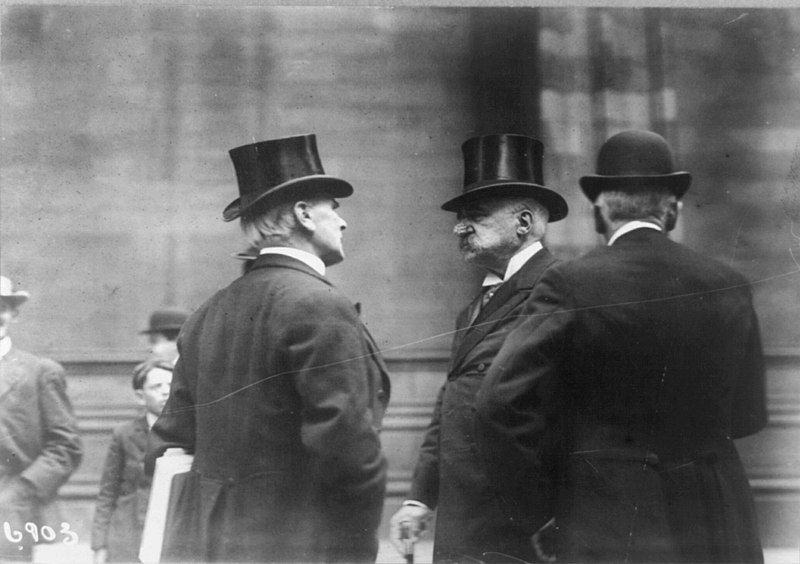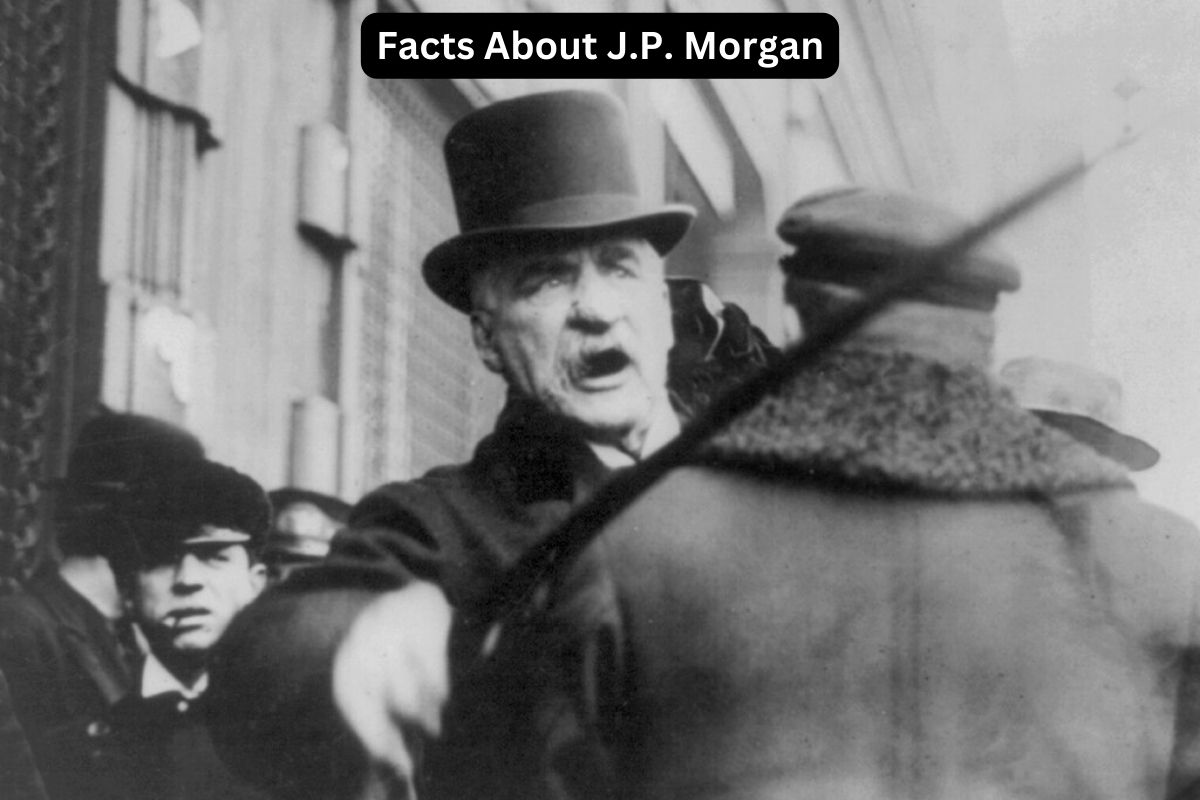John Pierpont Morgan, commonly known as J.P. Morgan, was a towering figure in American finance and industry during the late 19th and early 20th centuries. Born into privilege in 1837, he rose to prominence as a financier, banker, and industrialist.
Morgan’s influence extended far beyond the boardrooms of banks and corporations; he played a pivotal role in shaping industries, stabilizing the U.S. economy during financial crises, and leaving a lasting legacy in philanthropy and the arts.
This introduction provides a glimpse into the life and impact of a man whose name remains synonymous with financial power and cultural patronage.
About J.P. Morgan Facts
1. Born on April 17, 1837, in Hartford, Connecticut
He was born into a family of significant means and privilege. His father, Junius Spencer Morgan, was a successful banker, and his mother, Juliet Pierpont, came from a prominent family.
Also Read: Cornelius Vanderbilt Accomplishments
Young J.P. Morgan received a solid education, attending the English High School of Boston before pursuing further studies in Europe. His early exposure to finance and business through his family laid the foundation for his future career as a financier and banker.

2. Started his career in banking and later founded J.P. Morgan & Co
Upon returning to the United States, J.P. Morgan joined his father’s banking firm, J.S. Morgan & Co., where he gained practical experience in the world of finance.
In 1871, he established his own firm, J.P. Morgan & Co., which would become one of the most influential financial institutions in the United States.
Under his leadership, the firm focused on underwriting and providing financial services to various industries.
3. Played a major role in consolidating industries through mergers and acquisitions
J.P. Morgan’s career was defined by his ability to orchestrate and facilitate mergers and acquisitions that reshaped entire industries.
Also Read: Accomplishments of J.P. Morgan
He recognized the potential for efficiency and growth that could be achieved through the consolidation of competing companies. Some notable examples of his involvement include:
- Railroads: Morgan was instrumental in consolidating the fragmented railroad industry. He orchestrated the merger of several major railroads, including the Northern Pacific Railway and the Great Northern Railway, to create the Northern Securities Company in 1901. This move aimed to reduce competition and stabilize the industry.
- Steel: One of Morgan’s most famous deals was the creation of the United States Steel Corporation in 1901. He brought together Andrew Carnegie’s Carnegie Steel Company with several other steel companies to form this massive conglomerate. U.S. Steel became the world’s first billion-dollar corporation and dominated the American steel industry.
- Electricity: Morgan was also involved in consolidating the emerging electricity industry. He helped form General Electric (GE) by merging Thomas Edison’s Edison General Electric Company with the Thomson-Houston Electric Company. This merger created a powerful company that played a crucial role in shaping the electrical and industrial landscape.
- Banks and Finance: Beyond industry consolidation, Morgan also played a significant role in the financial sector. He organized and financed mergers among banks and financial institutions, increasing their stability and influence. His own firm, J.P. Morgan & Co., was at the center of many of these financial transactions.
4. Helped create the United States Steel Corporation in 1901
J.P. Morgan played a pivotal role in the formation of the United States Steel Corporation in 1901. At the time, it was one of the most significant corporate mergers in history.
Morgan orchestrated the merger of several major steel companies, including Andrew Carnegie’s Carnegie Steel Company, to create U.S. Steel. This conglomerate became the world’s first billion-dollar corporation, dominating the American steel industry.
Morgan’s involvement showcased his ability to bring together competing interests and shape industries through financial consolidation.

5. Known for his philanthropy, including funding the Morgan Library & Museum
J.P. Morgan was not only a shrewd financier but also a notable philanthropist. He donated substantial sums of money to various charitable causes and institutions.
One of his most enduring philanthropic contributions was the funding of the construction of the Morgan Library & Museum in New York City. This institution houses his extensive collection of rare books, manuscripts, art, and other treasures.
Morgan’s philanthropic endeavors left a lasting cultural legacy and contributed to the preservation of important cultural and artistic works.
6. Key figure in addressing the Panic of 1907
J.P. Morgan’s financial acumen extended beyond business deals. He was renowned for his ability to intervene in financial crises and stabilize the U.S. economy.
In the Panic of 1907, a severe financial crisis that threatened to disrupt the entire financial system, Morgan played a central role in calming the markets.
Using his vast network and influence, he convened leading bankers to pool resources and provide financial support to troubled institutions.
This concerted effort helped prevent a complete economic collapse and demonstrated Morgan’s capacity to act as a financial crisis manager and stabilizer.

7. A passionate art collector with an extensive collection
J.P. Morgan had a deep passion for art and culture. He was an avid collector of rare books, manuscripts, and artwork. His art collection included masterpieces by renowned artists such as Rembrandt, Leonardo da Vinci, and Raphael.
Morgan’s appreciation for art extended beyond personal enjoyment; he recognized the cultural and historical significance of these works and aimed to preserve them for future generations.
His collection formed the basis for what is now known as the Morgan Library & Museum in New York City, a cultural institution that continues to showcase his extraordinary collection and serve as a center for scholarship and research.
8. His banking legacy continued with the formation of JPMorgan Chase
J.P. Morgan’s influence and impact in the world of finance persisted long after his death in 1913. His banking firm, J.P. Morgan & Co., evolved and merged with Chase National Bank in 1955 to become JPMorgan Chase & Co., one of the largest and most prominent financial institutions in the world.
The legacy of J.P. Morgan’s financial expertise and the firm’s reputation for trust and reliability played a crucial role in the growth and prominence of JPMorgan Chase as a global financial powerhouse.
9. His influence contributed to the passage of the Federal Reserve Act in 1913
J.P. Morgan’s immense power and influence in the financial world led to increased scrutiny and calls for financial regulation. His role in shaping industries through mergers and acquisitions raised concerns about monopolistic practices and the concentration of economic power.
As a response to these concerns, the Federal Reserve Act was passed in 1913, during the same year Morgan passed away.
The Federal Reserve System was established as the central banking system of the United States, with the goal of providing greater stability and oversight in the country’s banking and financial system.
This regulatory framework aimed to prevent financial crises and mitigate the kind of economic turmoil that Morgan had helped address in the past.
10. Died in 1913, leaving a lasting impact on the world of finance
J.P. Morgan passed away on March 31, 1913, at the age of 75. His death marked the end of an era in American finance, but his legacy endured. He left an indelible mark on the world of banking, industry, philanthropy, and art.
His ability to navigate complex financial landscapes, intervene in financial crises, and shape the course of American business earned him a place among the most influential figures in American history.
The institutions he helped establish, such as the Morgan Library & Museum and JPMorgan Chase, continue to influence culture and finance to this day.
